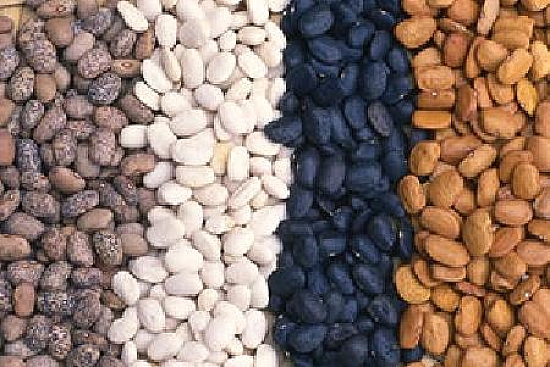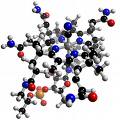
Last week I had the opportunity to hear James May, the founder of Wisdom Natural Brands, based here in Phoenix, tell his story of how he became involved with developing the stevia industry. Below is a white paper he shared with us that is referenced and provides a lot of very interesting information. This is a business paper, not a scientific publication, but it does contain references that can get you started if you're looking for more information.
It's not just a sweetener, apparently it has some endocrine and appetite effects as well (may decrease your appetite for sugar), and a new study suggests it may help to improve memory.
Also, I'm providing a link to a brand new website, Stevia University, which is a resource for all things stevia. Be sure to bookmark it!
Stevia Rebaudiana Bertoni Prepared by James A. May and provided as an educational service by Wisdom Natural Brands
Stevia has been correctly framed as the promised sweetener that can help resolve many of the world's sweetener, obesity, and diabetes concerns. Stevia can also solve much of the poverty of the farmers in third world countries by giving them a cash crop to grow, even improving the productivity of their soil and the quality of their other crops.
Stevia can be the next generation of the world's most preferred steetener. Consumers are becoming even more excited as they learn that stevia extract was not originally a chemical invention targeted for a totally different purpose, such as a drug or insecticide, which, after it was tasted, became an artificial sweetener (1).
Stevia, in its various forms has always been a natural sweetener that also offers numerous health benefits. In its natural forms it has been in use in parts of South America for more than 1500 years and, as a high intensity sweetener, in Japan and Asia for over 35 years. (2) Millions of people have ingested stevia daily and there has never been a documented adverse reaction reported (3).
Modern consumers have joyful anticipation for increased use of this sweetener that does not cause fat storage, does not adversely affect blood sugar or blood pressure, reduces caries and gum disease, does no harm, is good for the human body and — can taste great — depending on the extraction methods utilized.
The Joint Expert Committee on Food Additives (JECFA) of the World Health Organization has studied and approved 9 of the numerous naturally occurring glycosides residing in stevia leaves to be safe for human consumption in high intensity sweeteners. They are: stevioside, rebaudioside A, rebaudioside B, rebaudioside C, rebaudioside D, rebaudioside F, dulcoside A, rubusoside, and steviolbioside. Any combination of these glycosides totaling a minimum of 95%, the balance being other components of the stevia leaf, meets the standard set.
HECFA refers to steviol glycosides rather than stevia glycosides in determining acceptable daily intake (ADI) amounts of 4 mg per kilogram of body weight. This provides a 100-fold safety factor, meaning the human body can handle 100 times this amount and still be within the safety limits. However, steviol is one of three metabolites (i.e. the breakdown aglycones being steviol, isosteviol, and a unit of glucose) of the stevia glycosides, therefore, this related to 12 mg of the naturally occurring stevia glycosides per kilogram of body weight. Stevia glycosides are broken down into the three metabolites by bacterial action in the intestinal tract. It is well documented that steviol and the other metabolites are entirely excreted from the body.
In a presentation of the recent science regarding stevia at the 2009 annual meeting of the Calorie Control Council, Claire C. Kruger, PhD, DABT, CEO of Spherix Incorporated, a biopharmaceutical company, reported that"Stevia glycosides have very low toxicity in animals and there is no evidence of risk in humans, including repeat dose systemic toxicity, carcinogenicity, developmental, or reproductive effects. The weight of evidence indicates that steviol glycosides are not genotoxic." She also reported that"Stevia extracts and steviol glycosides show no DNA damage in a broad array of in vitro and in vivo assay," and that the"safety of ingestion of steviol glycosides in hmans has been corroborated in clinical trials; measures of tolerance, body weight, clinical chemistry, hematology and urinalyis did not show any evidence of untoward effects." She reported that critical newly published studies (5) resolve questions about any untoward effects after long term repeated exposure to steviol glycosides.
The Proceedings of the 3rd Stevia Sumposium 2009, held in Belgium reported recent scientific studies that found that,"Stevioside (i.e. the combination of Stevia glyucosides- lowered glucose, insulin and cholesterol. It had no effect on triglycerides or glucose tolerance," and that it"inhibited atherosclerosis by reducing macrophage, oxidized LDL and lipids. Furthermore, stevioside treatment increased the smooth muscle area of the plaque. This increase, together with the reduction of macrophages resulted in an increase of the smooth muscle cell-to-macrophage ratio". The scientists concluded by stating that"this is the first report showing an association between stevioside treatment and increased adiponectin and insulin sensitivity, improved antioxidant defense and reduced atherosclerosis. The decrease of oxidized LDL by stevioside is particularly important in view of our recent observation that LDL is associated with metabolic syndrome components." (6) No allergic reactions to stevia have been reported (7).
A patent application submitted to the US Patent Office, dated February 17, 2011, makes several significant claims, as a result of their scientific research, pertaining to stevia and brain function."Thus to summarize, stevia extract enabled improved learning and memory performance, to a similar, or better, extent as a natural reference substance, ginkgo biloba, and a pharmaceutical positive control compound, rolipram. These data showed that stevia-treated mice not only learned better than other groups but also retained their memory for a longer time period." When the product was given to human subjects they reported that,"Cognitive function, alertness and the ability to focus on work are seen to improve." The product they used was make by cooking leaves in water and is basically the same product sold by SweetLeaf (R), as stevia concentrate, since 1982.
SweetLeaf Stevia Sweetener is the only commercially available stevia extract that is made with a revolutionary new technology that uses only cool purified water and a series of filters. All other brands, currently in the market, utilize old technology that incorporates various chemicals, solvents and alcohols, including ethanol and methanol. Because stevia extracts can be between 200 and 300 times sweeter than sugar, they must be blended with other ingredients utilized as a carrier to make them palatable as a table-top sweetener. While all other brands use a sugar product, SweetLeaf(R) uses inulin, extracted from chicory root, which is a natural soluble fiber and prebiotic, thus creating a sweetener that improve health and vitality. SweetLeaf (R) wass the first stevia brand in the United States to acienve the FDA GRAS (Generally Recognied As Safe) designation.
REFERENCES
1. Aspartame was developed in 1965 by GD Searle, a pharmaceutical company, to be a prescription only drug for peptic ulcers. After it was tasted the company began the process to obtain FDA acceptance as a sweetener,which was achieved in 1981. According to Discover Magazine, 20 Things You Don't Know About Sugar, Sucralose (Splenda) was originally developed to be an insecticide (Oct. 2009, 121).
2. May, James A, The Miracle of Stevia, Kensington Publishing Corp. New York City, NY, 2003, 7, 32-42.
3. Geuns, Jan MC. Review: The Safety of Stevioside Used as a Sweetener, Proceeding of the first symposium: The Safety of Steviiside, KULeuven, 2004, 112.
4. http://www.steviauniversity.com/. Health and Healing Benefits of Stevia.
5. Ferri et all 2006; Jeppesen et al 2006; Barriocanal et al 2008; Maki et al 2008.
6. Gerraert, Benjamine et a, Natural Sweetener Stevioside Inhibits Atherosclerosis by Increasing the Antioxidant Defense in Obese, Insulin Resistant Mice, Atherosclerosis and Metabolism Unit, Deptarmtne of Cardiovascular diseases and Leuven Food Science and Nutrition Research Center Laboratory of Functional Biology, Katholieke University, Leuven, Belgium.
7. Geuns, op cit p. 85.















